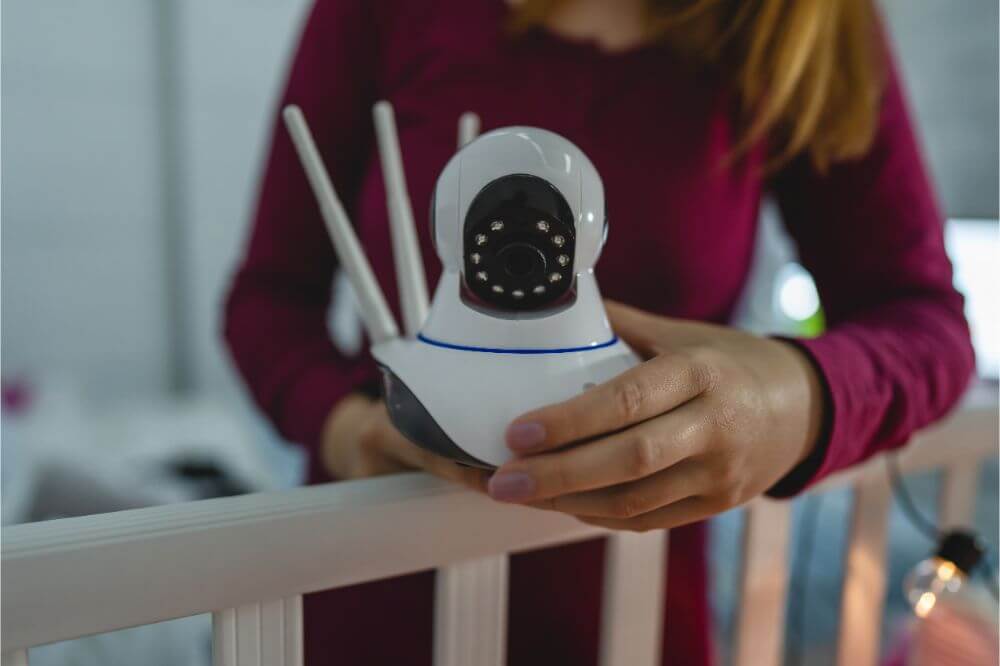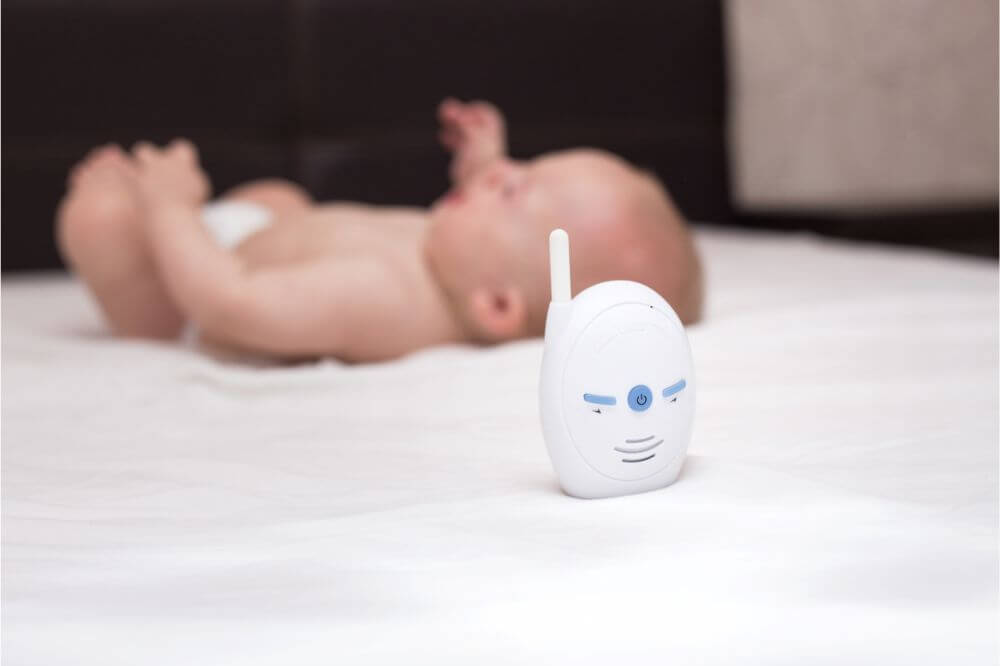When considering the best way to keep an eye on a baby while they sleep, there are a few factors to consider. With the development of technology, there are now two main types of baby monitors available on the market: wifi baby monitors and non-wifi baby monitors.
In this article, we’ll discuss the advantages and disadvantages of both, so that parents can make an informed decision when choosing the best baby monitor for their needs.
What is a Baby Monitor?
A baby monitor is a device that allows you to keep tabs on your baby when they are in another room. It is typically a two-piece system, consisting of a transmitter and receiver.
The transmitter is placed in the room where the baby is sleeping and the receiver is placed in the room where the parents are. The transmitter picks up sound and other audio from the baby’s room and transmits it to the receiver.
The receiver then amplifies the sound or audio so that the parents can monitor their baby while they are in another room.
Advantages of a Wifi Baby Monitor
Wifi baby monitors offer a range of advantages that non wifi monitors cannot provide. One of the main advantages of a wifi baby monitor is no range limitations, as wifi signals can travel further than the limited range of some non wifi monitors.
Two-way audio allows parents to talk to their baby from a remote location, and some wifi monitors also offer smartphone monitoring for added convenience. Although wifi baby monitors offer these advantages, there are some drawbacks to consider.
Network security issues can occur, as hackers can potentially gain access to wifi monitors. Wifi monitors are also more expensive than non wifi monitors, and interference from other devices can potentially affect the signal quality.
No Range Limitations
When it comes to wifi baby monitors, there’s no need to worry about the range of the signal. Traditional baby monitors are limited in terms of the range they can cover; the signal may be too weak or the walls of your home may be too thick.
With wifi baby monitors, the signal is able to penetrate walls and extend out to a larger area, making it a great choice for those who live in larger homes. This also makes it ideal for those who have a home office or entertainment room that’s further away from their baby’s room.
In addition, wifi baby monitors can be used in multiple rooms, giving parents the freedom to move around the house without losing the signal.
Two-Way Audio
Two-way audio is a great feature of wifi baby monitors. It allows parents to not only hear their baby but also talk to them. This is especially useful if the baby is crying, as the parent can talk them back to sleep without having to go into the room.
It also allows parents to soothe their baby if they are in another room. Furthermore, if the baby is being unruly or needs some extra attention, parents can easily talk to the baby to calm him or her down.
Two-way audio is an incredibly useful feature for any parent who needs to keep an eye on their little one.
Smartphone Monitoring
With a wifi baby monitor, you can keep a close eye on your little one from anywhere in the world. You can use your smartphone to monitor your baby’s room, check in on them, and even listen in for any distress.
With a wifi baby monitor, you can keep a close eye on your little one from anywhere in the world. You can use your smartphone to monitor your baby’s room, check in on them, and even listen in for any distress.
The camera feed can be streamed live and the two-way audio feature allows you to talk to your baby, even when you’re away. Wifi baby monitors are a great way to stay connected with your little one, even when you’re not at home.
Disadvantages of a Wifi Baby Monitor
Wifi Baby Monitors can be less reliable than non-wifi monitors due to network security issues, as well as the potential for interference with other devices in the home. They are also often more expensive than non-wifi monitors, which can be a factor for some parents.
Security issues can be alleviated by using strong passwords, as well as keeping the software up-to-date. Furthermore, interference can be minimized by using the right bandwidth and channel for the monitor.

Network Security Issues
When considering a wifi baby monitor, it’s important to understand the potential network security issues. As with any device that connects to your home wifi network, there’s a risk of unauthorized access or data theft. If the monitor is not secured properly, a hacker could gain access to your home network, which could compromise other devices connected to the network.
It’s important to use strong passwords and encryption features to protect your home network. Additionally, some wifi baby monitors may require additional software to be installed, which could also be vulnerable to attack.
More Expensive
The main disadvantage of a wifi baby monitor is that they are generally more expensive than a traditional non wifi baby monitor. The cost of a wifi baby monitor can start at a few hundred dollars and go up to a few thousand depending on the features and the brand.
The added features of a wifi baby monitor, such as the ability to monitor from a smartphone, two-way audio, and the lack of range limitations, have made the price of wifi baby monitors higher than non-wifi baby monitors.
Additionally, there can be some interference if the wifi network is weak or if there are other wifi networks in the vicinity.
Interference
One of the main drawbacks to wifi baby monitors is the potential for interference. If you live in a densely populated area with a lot of wifi networks, your baby monitor might be competing with them, creating static or garbled sound. This can be especially problematic if you’re using more than one device in the same vicinity.
Additionally, if you’re using a wifi connection that’s already saturated with traffic (such as a public wifi network), you may find that your wifi baby monitor lags or drops the signal. This can be disruptive when you’re trying to keep an eye on your baby.
Finally, a wifi baby monitor can be susceptible to power outages. If the power goes out, so does the internet connection—and, therefore, your baby monitor.
Conclusion
In conclusion, wifi and non-wifi baby monitors both offer advantages and disadvantages. Non-wifi monitors are generally more affordable than wifi models, but the range of the monitor is limited.

